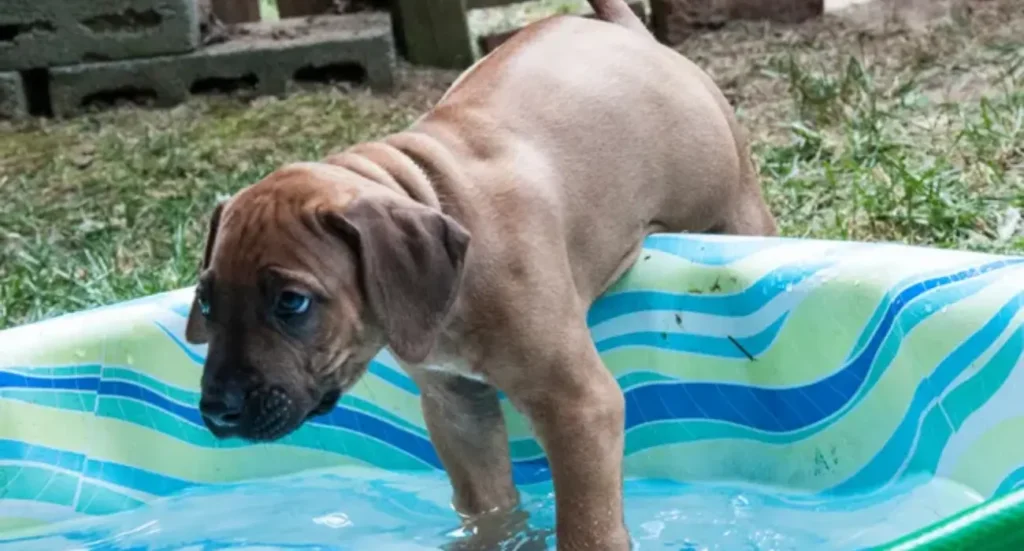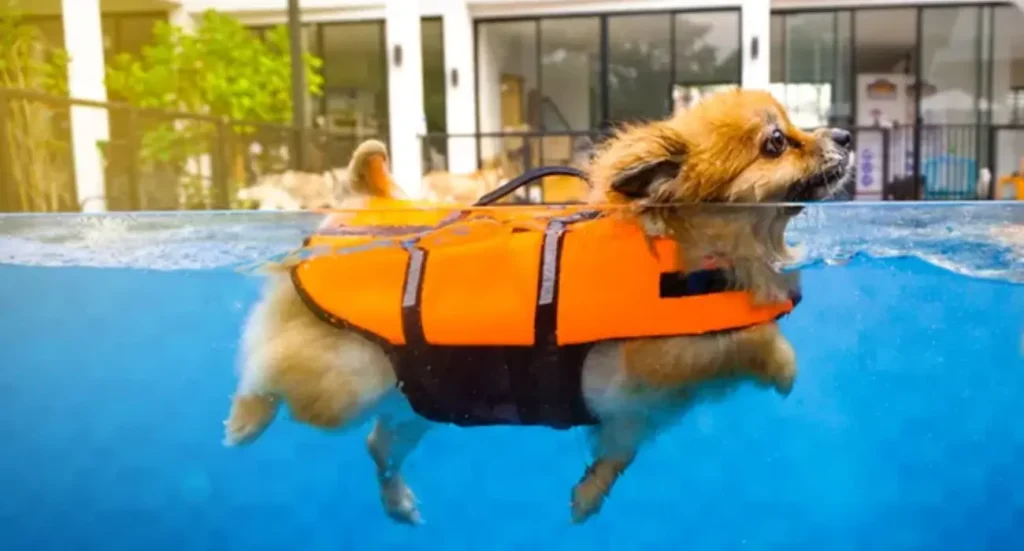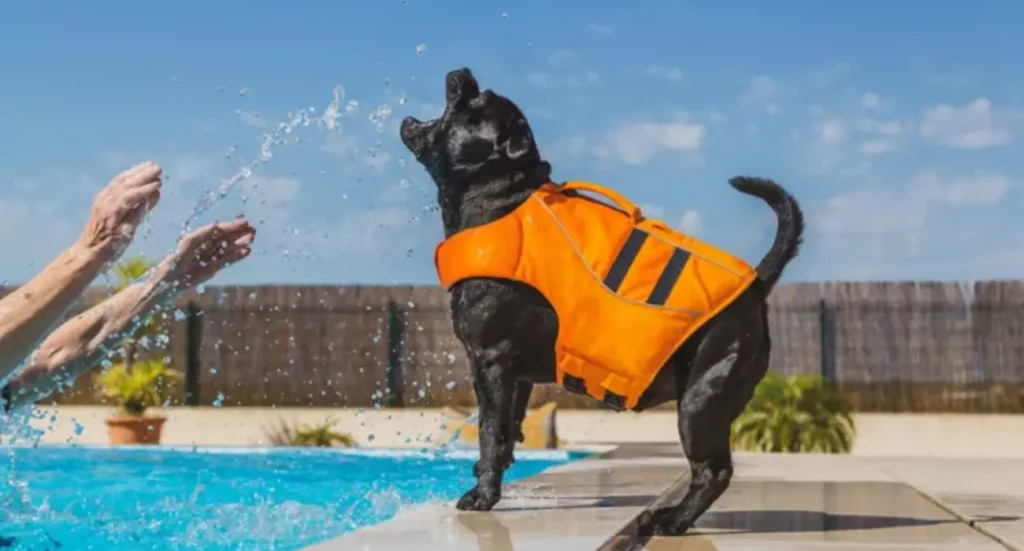Teaching Your Dog to Swim Safely: A Step-by-Step Guide for Every Pet Owner
Picture this: It’s a sunny summer day, and you’re watching families splash around in the pool while your furry companion sits on the sidelines, longing to join the fun. Many pet owners assume their dogs are natural swimmers, but the truth might surprise you. While that adorable dog paddle looks instinctive, most dogs need proper training before they can safely enjoy the water.
Whether you have a water-loving Labrador or a hesitant Chihuahua, this guide will walk you through everything you need to know about teaching your dog to swim safely and confidently.
Why Every Dog Needs Swimming Lessons

The misconception that all dogs are born swimmers has led to countless dangerous situations. Just like humans, dogs can panic in water, become exhausted, or struggle with proper technique. Some breeds face additional challenges – bulldogs and pugs, for instance, have body structures that make swimming particularly difficult.
Dog swimming training isn’t just about fun; it’s about safety. A properly trained swimming dog can enjoy water activities while minimizing risks to both pet and owner.
Essential Equipment: The Life Jacket Advantage
Before your dog ever touches water, investing in a quality dog life jacket is crucial. This isn’t an optional accessory – it’s a safety necessity that can mean the difference between a positive experience and a tragic accident.
Choosing the Right Life Jacket
Look for these features when selecting a life jacket:
- Proper size and secure fit
- Sturdy handle on top for easy lifting
- D-ring attachment for leash connection
- Bright colors for visibility
- Comfortable padding that won’t chafe
Life Jacket Training on Land
Start by introducing the life jacket during pleasant activities. Put it on your dog during meal times or while giving treats. This creates positive associations before any water training begins. Allow your dog to wear it for short periods daily until they seem completely comfortable moving around in it.
Phase One: Building Water Confidence

The Kiddie Pool Method
Beginning with a small kiddie pool offers several advantages over jumping straight into a full-sized pool. Your dog can explore water at their own pace without feeling overwhelmed by a large body of water.
Start with an empty pool, allowing your dog to step in and out freely. Toss their favorite treats inside to create positive associations. Gradually add just one inch of water during subsequent sessions, always keeping training sessions short and positive.
Introducing Pool Water Gradually
If you’re starting with a regular pool, begin at the shallowest end. Use floating treats or favorite toys to encourage your dog to wade in slowly. Never rush this process – some dogs need several days or even weeks to feel comfortable with water touching their paws.
Remember to celebrate small victories. Even if your dog only gets their toes wet during the first session, that’s progress worth praising.
Phase Two: Teaching Swimming Techniques
Proper Swimming Form
Watch your dog’s body position carefully. Many dogs instinctively use only their front legs, creating a vertical position in the water that leads to quick exhaustion and potential danger. Proper canine swimming technique involves using all four legs in a horizontal position.
If your dog struggles with form, gently support their belly with your arm while holding the life jacket handle. This helps them understand the correct body position while building confidence.
Teaching Direction and Control
Swimming safety for dogs includes teaching them how to navigate in water. Practice left and right turns, first on land with treats and commands, then gradually in shallow water. This skill becomes crucial when your dog needs to locate pool steps or shore exits.
Use consistent commands like “left,” “right,” and “turn around.” Practice these movements in the kiddie pool before progressing to deeper water.
Phase Three: Building Swimming Stamina
Gradual Distance Training
Start by positioning yourself just one step away from your dog in the water. As they swim to you, gradually increase the distance. Never move so far that your dog becomes anxious or panicked.
Keep training sessions to five minutes maximum. Dogs process new experiences during rest periods, so frequent short sessions prove more effective than lengthy ones.
Recognizing Fatigue and Stress
Learn to identify signs that your dog needs a break:
- Heavy panting beyond normal exercise levels
- Difficulty maintaining horizontal position
- Frantic paddling or panic signs
- Reluctance to continue swimming
Always end sessions on a positive note, before your dog becomes tired or stressed.
Phase Four: Pool Safety and Exit Training
Teaching Safe Pool Exits
Your dog must know how to exit the water independently. Set up visual targets or cones at exit points like steps or ramps. Practice the exit routine repeatedly until it becomes automatic.
Use the same directional commands you taught earlier to guide your dog toward safe exit points. This skill could save your dog’s life if they accidentally fall into water unsupervised.
Post-Swimming Care
After each swimming session, rinse your dog thoroughly with clean water to remove chlorine, salt, or other chemicals. While pool water is generally safe for dogs, preventing skin irritation and discouraging excessive drinking is important.
Dry your dog’s ears carefully to prevent infections, especially in breeds prone to ear problems.
Special Considerations for Different Breeds
Natural Swimming Breeds
Water-loving breeds like Labradors, Portuguese Water Dogs, and Newfoundlands typically adapt to swimming more quickly. However, they still benefit from structured training to ensure safety and proper technique.
Challenging Breeds
Brachycephalic breeds (those with flat faces) like pugs, bulldogs, and Boston terriers face breathing difficulties in water. These dogs require extra patience, constant supervision, and may need to limit swimming to very shallow water.
Small breeds might feel overwhelmed by large bodies of water and benefit from extended kiddie pool training before progressing.
Creating Positive Water Experiences
Reading Your Dog’s Signals
Respect your dog’s comfort level throughout the training process. Some dogs genuinely dislike water, and forcing them creates negative associations that may never disappear. If your dog consistently shows fear or stress despite patient training, consider that swimming might not be right for them.
Making It Fun
Incorporate games and toys into swimming lessons. Floating toys, water-safe balls, and treat-dispensing devices can make water time enjoyable rather than stressful.
Always end training sessions with praise, treats, and positive interaction. Your dog should associate water time with good things happening.
Safety Rules That Save Lives
Supervision is Non-Negotiable
Never leave your dog unattended near water, even if they’re excellent swimmers. Accidents happen quickly, and even experienced swimming dogs can encounter problems.
Pool Security
If you have a home pool, consider fencing or covers to prevent unsupervised access. Keep life jackets easily accessible, and ensure all family members know basic water safety procedures.
Emergency Preparedness
Learn basic water rescue techniques for dogs. Know how to safely assist a panicking dog without putting yourself at risk. Consider taking a pet first aid course that includes water emergency procedures.
Key Takeaways for Successful Dog Swimming Training

Training your dog to swim safely requires patience, proper equipment, and a structured approach. Remember these essential points:
- Always use a properly fitted life jacket during training and swimming
- Start slowly with kiddie pools or shallow water
- Keep training sessions short and positive
- Teach directional commands and safe exit procedures
- Never force a dog who shows consistent fear or stress
- Always supervise your dog around water
- Rinse your dog after swimming to remove chemicals
Frequently Asked Questions
1. How long does it take to teach a dog to swim?
The timeline varies greatly depending on your dog’s breed, age, and personality. Some dogs show confidence within a few sessions, while others may need several weeks of gradual introduction. Patience and consistency are more important than speed.
2. Can all dog breeds learn to swim?
While most dogs can learn basic swimming skills, some breeds face significant challenges due to their body structure. Brachycephalic breeds and those with heavy, muscular builds may struggle more than others. Every dog should be evaluated individually for their swimming potential.
3. What should I do if my dog panics in the water?
Immediately guide your dog to the shallowest area and allow them to rest. Never grab or pull a panicking dog, as this can increase their stress. End the session on a calm note and return to earlier training stages in your next session.
Swimming can become one of life’s greatest joys for both you and your dog when approached safely and patiently. With proper training, equipment, and respect for your dog’s individual needs, you’ll create positive water experiences that last a lifetime. Remember, every small step forward is progress worth celebrating on your journey to raising a confident, safe swimming companion.

